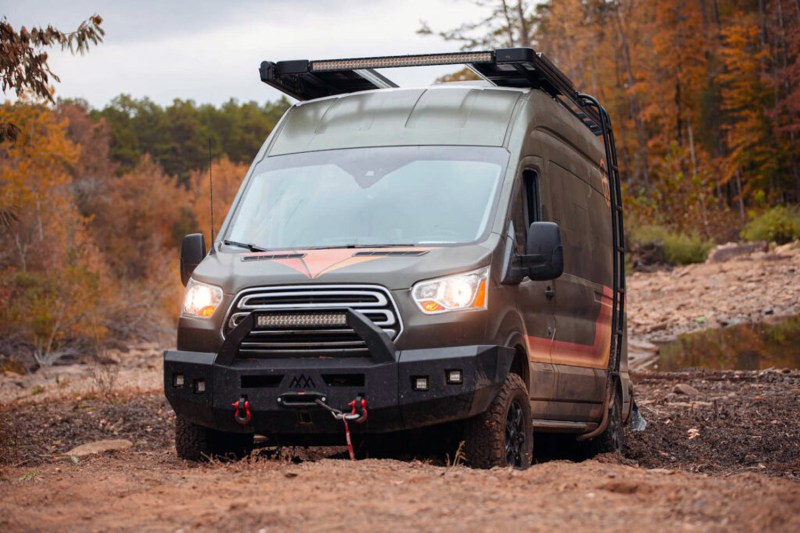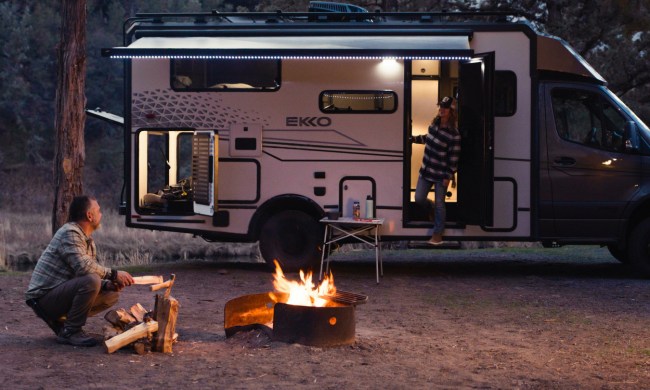
If you love working with your hands, there’s nothing more satisfying than a good DIY project. And if camping and overlanding are in your blood, building your own van-life-worthy camper van from scratch is the ultimate project. But, taking a (probably) used cargo van shell from bare bones to built-to-the-hilt is no easy feat. That’s why Ford introduced the Transit Trail van in 2023 to serve as a jumping-off point for DIYers looking for a little help. Now, van builders, Vandoit, is showing what’s possible with its ultra customizable, Transit-based Moov.
Every vehicle in the all-new Moov lineup starts life as either a Ford Transit Trail or Transit Cargo. It’s already a very capable platform, but for Moov buyers, it’s only the beginning. Vandoit offers a long list of customizations where the sky is the limit. The company offers “staged” options to simplify the process, but everything from the bed and the electrical system to the onboard plumbing and the vehicle roof rack and storage can all be tailored to suit.

The sleeping quarters
The sleeping quarters take up a ton of space in any camper van build, so Vandoit sought to make the bed layout as customizable as possible with three available options. These include a reconfigurable Murphy bed setup, an electric-assist hydraulic bed, and a clever new “drawbridge-style” bed that splits down the middle with each half folding toward opposite sides of the van to maximize living space.

The amenities
A good electrical system is the beating heart of any camper van. Vandoit recognizes that not every van lifer has the same power needs. “Weekend warriors,” for example, can opt for the basic Stage 1 setup with 200-300 amp hours of battery storage and a 1,500-watt inverter. The completely maxed-out Stage 3 electrical package, on the other hand, is an extreme, overbuilt setup that’s designed for the most hardcore overlanders looking to run for weeks (or longer) off-grid.
The water system can likewise be customized in one of several stages. With the entry-level option, the Moov includes a portable water system with a 6-gallon Jerry can. It’s designed to move around the van — from the kitchen to the sink to the shower — when and where it’s needed. The flagship water system includes an RV-worthy 22-gallon setup with an integrated hot water tank and a hot/cold water mixer. Two quick-disconnect locations are built into the van at the side door and rear. With either package, it’s also easy to remove the water tank for easy winterization.

Suspension upgrades
Last, but most important, is the available suspension upgrades. While the stock Ford Transit Trail edition comes equipped to handle a variety of terrain, Vandoit takes it a step (or three) further. The entry-level Stage 1 package provides additional lift and ground clearance, plus added load handling for occasional off-road adventuring. Stage 2 and Stage 3 packages add even more off-road capability, with the latter designed to tackle even the toughest off-road environments.
Vandoit underscores that this all-new camper van is designed for completely customizable build-outs. But this video highlights the Moov with all the bells and whistles:
A stock Ford Transit Trail van stickers for $65,795. The Vandoit Moov is expected to start at $114,900 for the rather capable, entry-level model. An all-in, fully kitted-out camper van with every option box ticked will run north of $200,000.



